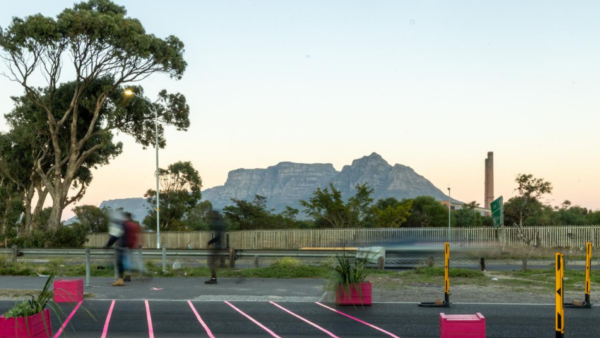

Internationalization of the design sector – 20 projects selected
In the second round of Internationalization of the design sector 2023, 20 projects were selected. Roxanne Minten, coordinator of the Internationalization of the Design Sector Grant Scheme, reflects on the round.
general impression
In this round, the emphasis of a large number of the projects is on social, community and climate issues. In architecture, many projects focus on urban development, specifically on migration, transformation, ecology or circularity. Within the design discipline, there are a number of projects involving textile applications (including design applications) or local crafts, such as the project SUSTAINABLE LIFESTYLE, Finding Lasting Gems in Waste by Hinggi. Social design also features frequently as a sub-discipline. Projects in digital culture take a speculative approach to current topical issues, such as Eva Garibaldi’s project The Stones Only Appear To be Non-Living and Wondermash’s Birth Futures.
selection
The available budget in this round was not sufficient to award a grant to all 20 positively assessed applications. A few notable projects from this round’s selection are:

Eva Garibaldi – The Stones Only Appear to be Non-living
Eva Garibaldi and Ana Laura Richter (Swamp_Matter) are working on the project The Stones Only Appear to Be Non-Living in collaboration with Škocjan Caves Public Service Agency and Aksioma Institute. Inspired by the Škocjan caves in Slovenia, they are creating a digital, generative underground world using scientific data about the caverns. The project speculates on how the Anthropocene becomes visible in the environment and proposes both utopian and dystopian possibilities with regard to future climate developments. Using algorithms, they aim to show the effects of contaminants on cavern formation. The project is the starting point for a wider study of landscape changes due to climate change. The approach integrates science and immersive storytelling to raise awareness and stimulate discussions. The result is presented as a 15-minute immersive video installation, on view at Aksioma Gallery and later in the Škocjan Caves.

Foundation for Achieving Seamless Territory (FAST)– Design Strategies for Climate Migration
With the Design Strategies for Climate Migration project, FAST is investigating innovative approaches to humanitarian responses to climate-induced migration, focusing on the Sahel region. Using a multidisciplinary approach and led by experts, the spring and autumn 2024 workshops at the Institute for Public Knowledge at NYU and the UN will create a dialogue between UN agencies, designers, humanitarian organizations and local communities. In doing so, they want to emphasize the importance of design as a powerful tool for influencing policy and awareness to bring about social change. The approach integrates research, policy analysis and stakeholder engagement to develop effective solutions. In addition, the methodology includes data analysis, policy research and the development of pilot projects to bring direct improvements to the living conditions of those affected by climate-induced migration. This approach is dual in its focus on both systems and individuals. Collaboration partners are The UN Under-Secretary-General Peacebuilding Fund, The International Organization for Migration (IOM) and The International Crisis Group (ICRC).

Lesia Topolnyk - New Ecological Order – Transformation of nature in North Africa due to the European energy transition
The New Ecological Order project by architect Lesia Topolnyk, in collaboration with Studio Space Station, examines the impact of large-scale energy-transition projects in North Africa. The initiative, which is part of the IABR programme Agents of Change, involves various experts, including Territorial Agency and local partners such as Koun Aktif. The emphasis is on the relationship between politics and space, with architecture serving as a critical tool to understand the complex dynamics of energy transition. The first phase consists of a study trip to Morocco, interviews with local communities and a multidisciplinary approach aimed at unravelling the implications of these projects. The result is an in-depth dialogue on green energy transition, where creative methods such as architectural forensics are deployed to shed light on the connection between politics and space.
Click here for all the selected projects in Internationalization of the design sector in 2023.
numbers
Of the 48 subsidy applications taken into consideration, 20 are receiving grants. This brings the percentage of applications receiving grants to 65.9%. The budget available for this round was € 375,000.
closing dates 2024
The closing dates of the Internationalization of the Design Sector Grant Scheme in 2024 are 28 March and 1 October.
Photo at the top: The Pargetting Stories bundelen – Liza Prins, Olga Micińska and Sophia Simensky







